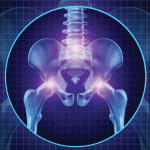In a study of a skill-based virtual reality program, researchers attempted to take self-management items discussed in books and turn them into bite-sized, virtual reality format pieces. Study participants with chronic lower back pain did a curriculum of 56 days for an average of six minutes a day, with the 180 subjects evenly split between a sham program and the active program.4
The sham program was a nature video. In the study’s active-treatment arm, participants had immersive experiences that followed eight weekly core themes on management and living better with chronic pain. The participants came from a convenience sample from online ads.
Researchers found a statistically significant difference in clinically meaningful reduction in pain intensity or overall pain interference after 24 months of treatment. However, given this was a convenience sample, more rigorous work is needed.
“We need this recruited from hospitals,” Dr. Birckhead said. One such effort is an U.S. National Institutes of Health-funded Back Pain Consortium (BACPAC) Research Program, which will have data on patients recruited from hospitals. “But we will need more studies with long-term data,” he said.
Thomas Collins is a freelance medical writer based in Florida.
References
- Geraghty AWA, Maund E, Newell D, et al. Self-management for chronic widespread pain including fibromyalgia: A systematic review and meta-analysis. PLoS One. 2021 Jul 16;16(7):e0254642.
- Wu Z, Zhou R, Zhu Y, et al. Self-management for knee osteoarthritis: A systematic review and meta-analysis of randomized controlled trials. Pain Res Manag. 2022 Mar 2;2022:2681240.
- Devan H, Farnery D, Peebles L, et al. Evaluation of self-management support functions in apps for people with persistent pain: Systematic review. JMIR Mhealth Uhealth. 2019 Feb 12;7(2):e13080.
- Garcia LM, Birckhead B, Krishnamurthy P, et al. An 8-week self-administered at-home behavioral skills-based virtual reality program for chronic low back pain: Double-blind, randomized, placebo-controlled trial conducted during COVID-19. J Med Internet Res. 2021 Feb 22;23(2):e26292.

